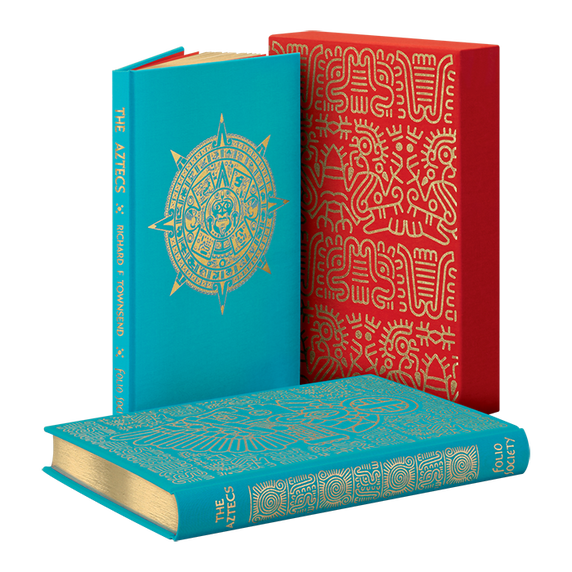
The Aztecs
The history of one of the world’s most fascinating civilisations, a people both dynamic and feared, is newly presented in a stunning two-volume Folio edition.
The Surprising Life of a Medieval Empire
With a new preface by the author
Byzantium is Judith Herrin’s masterful and often surprising history of a 1,000-year empire, in a Folio Society edition sumptuously illustrated with imperial treasures, plus a new introduction by the author.
‘The best introduction to Byzantine history I’ve seen... This most intriguing of empires is depicted so vividly and clearly.’
- Philip Pullman
The Byzantine Empire was a world power for more than 1,000 years, from the founding of its magnificent capital, Constantinople (modern Istanbul) by Constantine the Great in 330 to its fall to the Ottoman Turks in 1453. In this sweeping history, Judith Herrin examines the life and legacy of this great civilisation that evolved out of the Roman Empire – its emperors and empresses, conquests and Crusades, desperate sieges, and importance as a bulwark between the West and the burgeoning Islamic world, making possible the ascent of modern Europe. Byzantium’s cultural glories are displayed in 32 pages of dazzling colour images, including great churches and monasteries, gold and silver work, painted and ivory icons, and vivid mosaics. In a new preface, Herrin rejoices that recent interest has taken Byzantium ‘out of its East Mediterranean corner to reveal its brilliant contributions to global civilisations’ – an ambition achieved in this fascinating introduction by a gifted scholar of late antiquity.
Bound in printed and blocked cloth
Set in Bembo Book with Baker Signet display
456 pages
28 pages of colour plates
6 maps plus 21 integrated black & white images, including full-and double-page spreads
Ribbon marker
Blocked slipcase
10˝ x 6¾˝
‘Not just an important work of scholarship but a delight to read.’
- The Scotsman
Byzantium’s creative culture aroused admiration and envy throughout the western world. Visitors were astonished by ‘the wealth of the citizens of Constantinople, who dressed in silk and ate caviar… Its greatness derived from its beauty, marked by monuments and collections of artworks.’ The colour sections in this Folio edition parade the empire’s full splendour – including the Church of Hagia Sophia and the Mosaics of Ravenna, both of which inspire a chapter in the book. Richly coloured icons and gilded frescoes of saints leap from the page, alongside examples of superb Byzantine craftsmanship in ivory, silver and gold, and illuminated manuscripts such as the beautiful Madrid Skylitzes. Herrin’s story is further illustrated with black-and-white images of architectural detail, artefacts, coinage and documents, plus six maps, a chronology of the empire and a list of emperors.
Byzantium considered itself the centre of the world, and Constantinople as the replacement of Rome. Though Greek-speaking, it saw itself as the Roman Empire and its citizens as Romans.
The Byzantine Empire bridged classical antiquity and medieval Christendom. Byzantium delves deep into this highly sophisticated culture and society, and Herrin delivers on her promise to ‘identify some surprising elements that made Byzantium distinctive.’ These include the ability of women such as Empresses Irene and Theodora to take the reins of power, the role of eunuchs in administration, and even the adoption of forks at the dining table, a practice which amazed visiting Venetians. Herrin includes chapters on the fearsome naval weapon known as Greek Fire, monastic wranglings on Mount Athos and the great 12th-century historian Anna Komnene. Above all, she makes a passionate case for the Empire’s greatness – showing that the modern use of ‘Byzantine’ to mean obscure, unfamiliar or bureaucratic is both an inaccuracy and an injustice.
